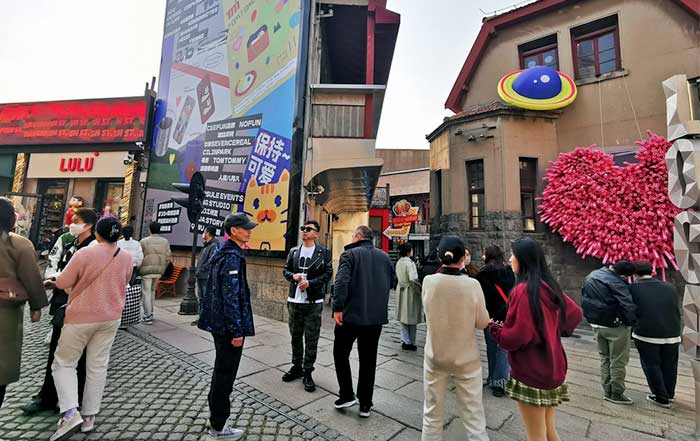iQIYI, an innovative market-leading online entertainment service in China, launched its Luoyang Virtual Reality (VR) Project in Shanghai in April and has since attracted more than 5,000 players to try the industry's first-ever all-immersive entertainment experience. Based on iQIYI's hugely popular original IP Luoyang, the Luoyang VR Project will also land in Luoyang, Henan province and Beijing later this summer in the second half of the year.
The project has generated tremendous interest and raving reviews in the short time since its launch. Consumers marveled at how highly realistically the set-up stimulates the physical experience of high winds, waterfall, and explosion—all within a physical space of 300 square meters. For consumers, the project breaks new ground in merging imagination and reality.
The strong user feedback is a testament to the sophistication of iQIYI's entertainment technology. The first attempt in the VR industry to integrate different elements from immersive theatre, VR, and original IP, the project leverages the "Inside-out Tracking" technology and other industry-leading, sensory-simulation techniques to "build in" cars, boats, carriages, and other props as well as to simulate different physical experience. The upshot is a highly realistic environment that fully immerses the audience in the story.
Created by the iQIYI DREAMVERSE studio, the project marks the latest addition to iQIYI Chinese Historic City Universe (iCHCU) of Luoyang, which consists of 12 distinct entertainment projects all inspired by the popular Luoyang IP.
ZHANG Hang, senior vice president of iQIYI said: "The Chinese content market provides a host of excellent IPs, but the industry is still at the beginning of harnessing the full potential of these IPs. The Luoyang VR Project shows how incorporating technological innovations and a localized approach to exploring VR commercialization, original IP-based projects boost both the content market and cultural consumption at large."
HU Shihui, founder and CEO of metaverse-themed park X-META, iQIYI's partner and offline operator of the project, pointed out in addition to a highly immersive "in-theatre" experience, the project also generates user interest by incorporating dining and opportunities for dressing up in costumes and photoshoots. Hu said: "As the Luoyang VR project meets a variety of consumer needs, it elevates the 'cultural metaverse' entertainment experience to a whole new level." Hu also anticipated sustained consumer interest in the project in the coming months as summer holidays begin.
iQIYI first entered the field of offline VR entertainment in 2018, and, in 2020, established the production studio DREAMVERSE to focus on curating VR projects and all-immersive experiences. DREAMVERSE has since launched a series of popular offline VR projects, and the Luoyang VR Project marks its latest hit.
Gen-Z and younger millennials are using virtual reality extensively, with 36% of Chinese consumers having used virtual reality headsets to play games or view content in the past six months, according to PwC's 2022 Global Consumer Insights Survey China Report.
Building on the momentum of the Luoyang VR Project, iQIYI is also set to launch three shorter interactive experience projects including Mars Rescue, Kunlun Maze, and Apocalyptic Adventure at the end of June. These projects target particular audience segments—such as couples—and promise to enrich consumers' options for entertainment.




